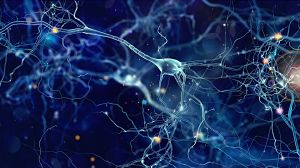Stem Cell Therapy for Scleroderma: A Research-Based Perspective

10,000+ subscribers
Join our newsletter to learn more about stem cell therapy and the science behind it.
Scleroderma is a rare and complex autoimmune disorder that presents a myriad of challenges for both patients and healthcare professionals alike. This chronic disease primarily affects the skin and connective tissues, can manifest in various forms, and involves multiple symptoms.
The underlying cause of scleroderma remains elusive, and although significant strides have been made in understanding its pathogenesis, there is still much to uncover. In recent years, researchers have turned to novel approaches, such as stem cell therapy, to pursue more effective treatment options for this enigmatic condition.
This article delves into the various aspects of scleroderma, including its symptoms, potential treatments, and the promising role of stem cell therapy, particularly mesenchymal stem cells, in addressing this debilitating autoimmune disorder.
Stem Cell Therapy for Scleroderma
Stem cell therapy, explicitly mesenchymal stem cells (MSCs), has gained significant attention recently as a potential treatment for autoimmune diseases, including scleroderma. MSCs have unique properties that make them particularly promising for treating these conditions.
What are Stem Cells?
Stem cells are undifferentiated cells that have the potential to develop into various cell types, including skin, muscle, and nerve cells. They play a crucial role in the body's natural healing process. You can learn more about stem cells here.
Benefits and Limitations of Stem Cell Therapy for Scleroderma
Stem cell therapy has shown promising results in alleviating some symptoms of scleroderma, such as skin thickening, joint stiffness, and internal organ damage. However, more research is needed to fully understand this treatment approach's potential benefits and limitations for severe scleroderma patients.
Mesenchymal Stem Cells: A Brief Overview
Mesenchymal stem cells (MSCs) are multipotent stromal cells that can differentiate into various cell types, such as osteoblasts (bone cells), chondrocytes (cartilage cells), and adipocytes (fat cells). They are found in multiple tissues, including bone marrow, adipose tissue, and umbilical cord blood. MSCs have gained interest due to their immunomodulatory, anti-inflammatory, and regenerative properties.
{{protocol2="/styling"}}
Immunomodulatory and Anti-Inflammatory Effects of MSCs
Autoimmune diseases like scleroderma are characterized by an overactive immune system mistakenly attacking the body's tissues. MSCs can modulate the immune system by interacting with immune cells, such as T-cells, B-cells, and natural killer cells. This interaction can help balance the immune system in response, preventing tissue damage and reducing inflammation.
A study published in the journal Stem Cells International in 2016 reported that MSCs could effectively suppress the activation of T-cells and B-cells, which play a significant role in the pathogenesis of autoimmune diseases, including scleroderma.
Regenerative Properties of MSCs
One of the significant challenges in treating autoimmune diseases like scleroderma is repairing damaged tissues and organs. MSCs have regenerative properties, as they can differentiate into various cell types and secrete growth factors that promote tissue repair.
In a study published in the Journal of Translational Medicine in 2017, researchers found that MSCs could improve skin thickness and reduce fibrosis in a mouse model of scleroderma by suppressing collagen production and promoting the regeneration of healthy skin cells.
Application of MSCs in Autoimmune Diseases
Several clinical trials have explored the potential of MSCs for treating autoimmune diseases, including scleroderma, multiple sclerosis, and rheumatoid arthritis. These studies have reported promising results, improving disease symptoms and overall quality of life.
For example, a study published in Rheumatology in 2018 found that treatment with MSCs significantly improved skin thickening, lung function, and quality of life in scleroderma patients.

What is Scleroderma?
Scleroderma is a rare, chronic autoimmune disease that affects the connective tissues, causing inflammation, fibrosis, and the overproduction of collagen. This results in the hardening and tightening of the skin and internal organs, which can significantly impact a person's quality of life. There are three main types of scleroderma: localized, limited, and diffuse:
Localized Scleroderma
Localized scleroderma primarily affects the skin and underlying tissues, with little to no impact on internal organs. It is more common in children and is generally less severe than other forms of systemic scleroderma.
Limited Scleroderma
Limited scleroderma, or CREST syndrome, affects the skin and may involve the digestive system, heart, and lungs. It progresses slowly and is generally less severe than diffuse scleroderma.
Diffuse Scleroderma
Diffuse scleroderma, or diffuse systemic sclerosis, is a more severe form of the disease that affects a larger skin area and can involve multiple internal organs, leading to potentially life-threatening complications.
Causes and Risk Factors
The exact cause of scleroderma is unknown, but it is believed to involve a combination of genetic, environmental, and immunological factors. Certain ethnic groups and individuals with a family history of autoimmune diseases are at a higher risk of developing scleroderma.
Symptoms of Scleroderma
Scleroderma is a complex autoimmune disease characterized by the overproduction of collagen, leading to the hardening and tightening of the skin and other connective tissue and tissues. The condition can also affect internal organs, blood vessels, and the digestive system. Symptoms of scleroderma can vary widely between individuals and are often dependent on the type and severity of the disease. Here, we outline the most common symptoms associated with scleroderma.
Skin Symptoms
- Skin thickening and hardening: The hallmark symptom of scleroderma is the thickening and hardening of the skin. This can occur in localized areas or affect more significant body regions.
- Raynaud's phenomenon: Many people with scleroderma experience Raynaud's phenomenon, characterized by the narrowing of small blood vessels in response to cold or stress. This can cause fingers and toes to turn white, blue, or red and may result in pain and numbness.
- Skin discoloration: Some scleroderma patients may notice changes in the color of their skin, such as areas of hyperpigmentation (darkening) or hypopigmentation (lightening).
- Calcinosis: Calcinosis refers to the formation of calcium deposits under the skin, which can be painful and cause discomfort.
Joint and Muscle Symptoms
- Joint pain and stiffness: Scleroderma can cause inflammation and stiffness in the joints, leading to pain and limited mobility.
- Muscle weakness: Some individuals with scleroderma may experience muscle weakness or fatigue, making it difficult to perform daily activities.
Gastrointestinal Symptoms
- Difficulty swallowing: Scleroderma can affect the smooth muscles of the esophagus, leading to difficulty swallowing and the sensation of food getting stuck in the throat.
- Acid reflux: Many patients with scleroderma experience acid reflux, also known as gastroesophageal reflux disease (GERD), which can cause heartburn and damage the esophagus lining.
- Bloating and constipation: Scleroderma can also impact the digestive system, leading to bloating, constipation, and diarrhea.
Respiratory Symptoms
- Shortness of breath: Scleroderma can cause lung tissue scarring, which may lead to shortness of breath and reduced lung capacity.
- Pulmonary hypertension: Some individuals with scleroderma may develop pulmonary hypertension, a condition characterized by high blood pressure in the lungs' arteries.
Kidney Symptoms
- Scleroderma renal crisis: In some cases, scleroderma can lead to a life-threatening condition known as scleroderma renal crisis, characterized by a sudden increase in blood pressure and rapid kidney function decline.
Early Symptoms
Early symptoms of scleroderma may include Raynaud's phenomenon (abnormal constriction of blood vessels in response to cold or stress), dry mouth, and difficulty swallowing.
Skin Involvement
The affected skin may become thickened, hardened, and dry as the disease progresses. Skin tightening can also cause joints to become less flexible, reducing mobility.
Internal Organ Damage
Scleroderma can damage internal organs such as heart tissue as the heart, lungs, and kidneys, causing complications like pulmonary hypertension, congestive heart
failure, and scleroderma renal crisis. Gastrointestinal issues, such as acid reflux and difficulty swallowing, may also arise due to the disease affecting the digestive system.
Diagnosing and Treating Scleroderma
Diagnosing scleroderma can be challenging due to its wide range of symptoms and similarity to other autoimmune diseases. However, several diagnostic tools are used to identify the disease.
Blood Tests
Blood tests can detect elevated levels of specific antibodies commonly associated with scleroderma. These tests can help differentiate scleroderma from other autoimmune diseases, such as rare diseases like rheumatoid arthritis.
Skin and Organ Assessment
Physical examination of the skin and imaging techniques like X-rays, ultrasounds, and CT scans can help assess the extent of skin involvement and internal organ damage.
Treatment Options
Scleroderma has no cure, but various treatment options are available to help manage symptoms and slow disease progression.
Medications
Medications such as calcium channel blockers, which dilate blood vessels and improve blood flow, and immunosuppressants, which reduce inflammation, can help alleviate some symptoms of scleroderma.
Physical and Occupational Therapy
Physical and occupational therapy can help keep joints flexible and maintain muscle strength, improving the patient's overall quality of life. A physical therapist can recommend exercises and activities tailored to the individual's needs.
Conclusion
Scleroderma is a complex autoimmune disease that affects the skin and internal organs, causing a range of symptoms that can significantly impact a person's quality of life. While there is no cure for scleroderma, various treatment options, and treatments, including stem cell therapy, offer hope for managing symptoms and improving patients' lives.
Frequently Asked Questions
What is the primary cause of scleroderma?
The exact cause of scleroderma is unknown, but it is believed to involve a combination of genetic, environmental, and immunological factors.
How is scleroderma diagnosed?
ScleroderScleroderma is diagnosed through blood tests, physical examination of the skin, and imaging techniques to assess the extent of skin involvement and internal organ damage.
Is there a cure for scleroderma?
There is currently no cure for scleroderma. However, various treatment options are available to help manage symptoms and slow disease progression.
What is stem cell therapy, and how does it work for scleroderma?
Stem cell therapy involves extracting a patient's stem cells, often from their bone marrow or adipose tissue, and reintroducing them into the body in high concentrations. The stem cells repair damaged tissues, reduce inflammation, and promote healing. It has shown promise in alleviating some symptoms of scleroderma, such as skin thickening, joint stiffness, and internal organ damage.
Is stem cell therapy for scleroderma safe and effective?
While stem cell therapy has shown promising results in some scleroderma patients, more research is needed to understand this treatment approach's potential benefits and limitations fully. It is essential to consult with a medical professional before pursuing stem cell therapy for scleroderma.
.webp)






.jpg)